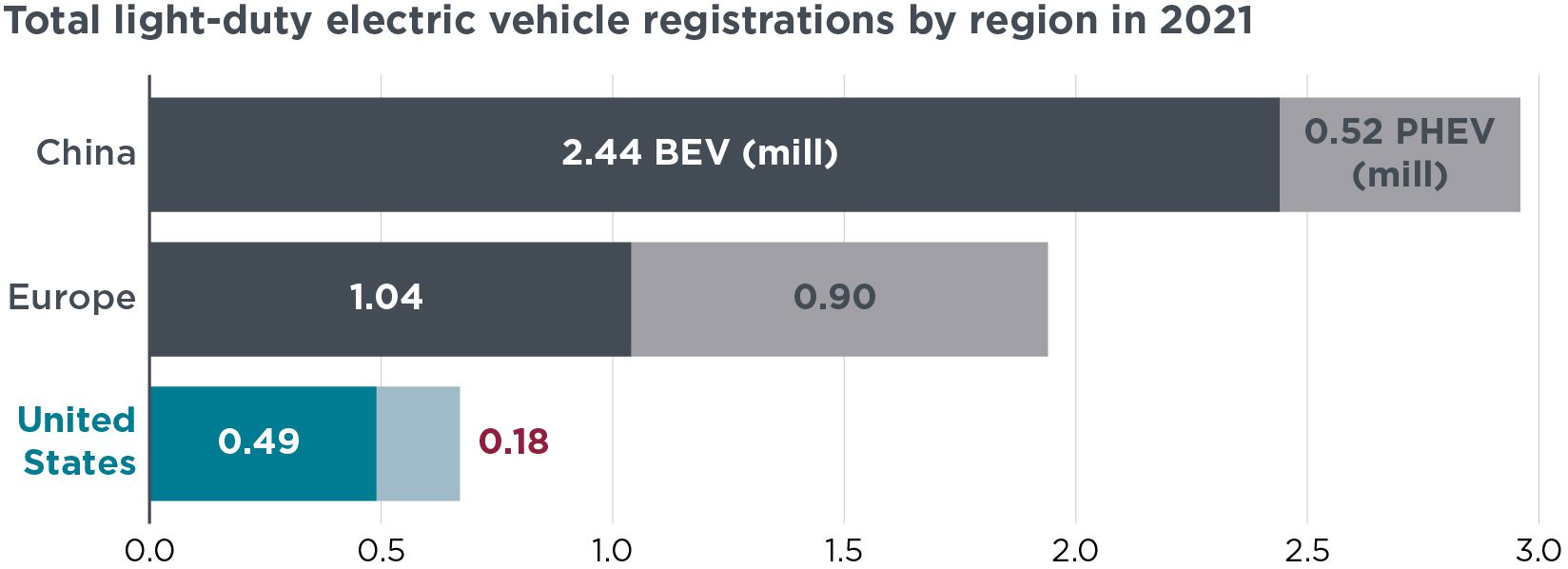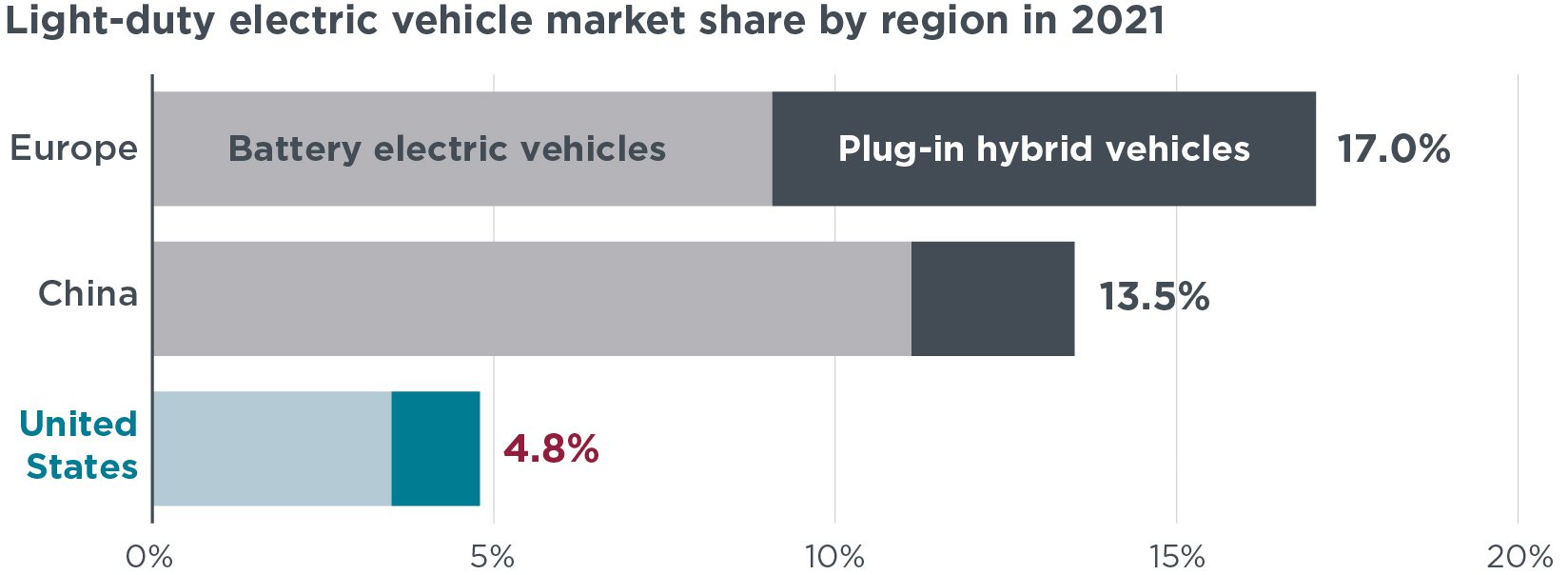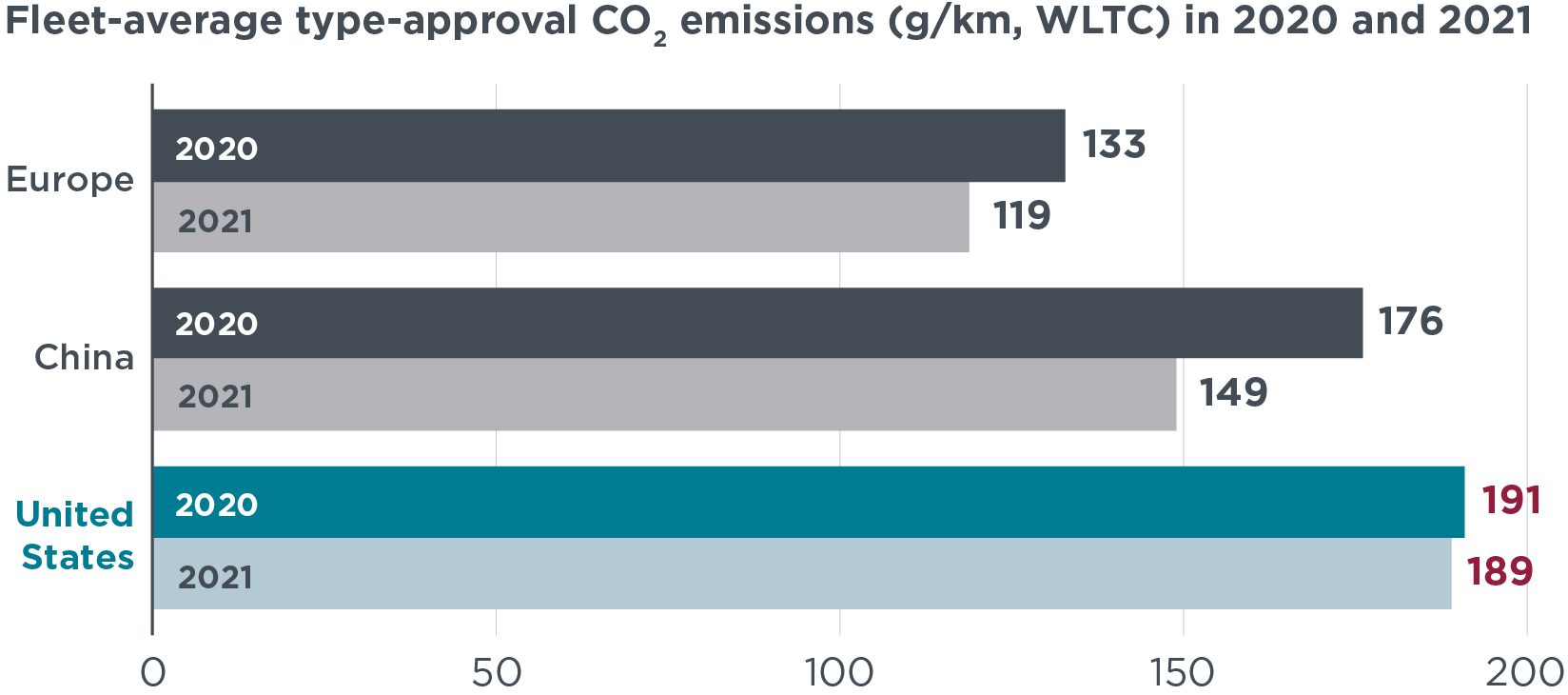Blog
How the United States is lagging in the global EV market in three charts
China, Europe, and the United States together made up about 60% of the global light-duty vehicle (LDV) market in 2021. These markets will have an outsized impact on the global electric vehicle (EV) transition and they’re all leaders in EV uptake. But there’s a yawning gap between the speed with which China and Europe are moving toward electrification and how fast the United States is moving. Three charts tell the story.
Looking at vehicle registration data, we see that in 2021, the United States grew its EV market of battery electric and plug-in hybrid electric vehicles by more than 100% compared to 2020 and approximately 670,000 electric LDVs were sold. However, those sales were not even one-fifth of China’s sales, which were nearly 3 million in 2021, and they were just over one-quarter of Europe’s sales, which were almost 2 million.

Another important metric to consider is the percentage of sales in each region that are EVs. In 2021, Europe was the leader and 17.0% of all new LDVs sold were EVs. China was not too far behind, as its EV sales share jumped from 5.5% in 2020 to 13.5% in 2021. Here, too, the United States trailed badly and EVs accounted for only 4.8% of LDV sales in 2021. A key driver behind the sales in China was the “dual-credit” policy described here, and in Europe it was new CO2 standards for LDVs set at 95 g/km from 2020 onward.

Fleet-average emissions is a measure of the average type-approval CO2 emissions, in g/km under the Worldwide harmonized Light vehicles Test Cycle (WLTC), in a given region in a given year. A number that shrinks over time can be an indicator of more EVs being sold, but this is also a measure of how much cleaner internal combustion engine (ICE) vehicles are becoming. Even the very last generation of ICE vehicles is likely to remain on the roads for decades to come, and manufacturers need to continue to adopt more advanced technologies to reduce CO2 emissions and improve fuel efficiency beyond just EVs. And while the Automobile Trends Report from the U.S. Environmental Protection Agency found that fleet-average CO2 emissions decreased in the United States in 2021, it also highlighted that the share of larger vehicles like trucks and SUVs increased; this had a dampening effect on the fleet-wide emissions benefits that might have otherwise been achieved if more fuel-efficient vehicles had been a larger share of the market. This is reflected in the figure below, where we can see that despite EV sales doubling in the United States from 2020 to 2021, fleet-average CO2 emissions dropped by only 1 g/km. At 189 g/km average across the U.S. fleet, emissions are significantly higher than the fleets in China and Europe at 149 g/km and 119 g/km, respectively. Looking across the three markets, the United States had the highest absolute emissions level in 2020 and the smallest reduction from 2020 to 2021.

All of this said, the story doesn’t end in 2021. While the United States is lagging compared to China and Europe, there’s a big opportunity to catch up in the form of the Inflation Reduction Act (IRA), which became law last summer. This is a $370 billion investment package intended to strengthen U.S. leadership in clean energy and it seeks to support vehicle electrification in particular through increased domestic production and consumer incentives. Recent analysis by the ICCT and Energy Innovation estimated that the combined effects from IRA incentives, declining manufacturing costs, and adoption of state policies could result in an EV sales share of between 48% and 61% for LDVs in the United States by 2030.
That range for sales share is a lot bigger than the 4.8% above, but ICCT’s recent global modeling assessment shows that EVs must be at least 67% of new passenger vehicle sales in the United States by 2030 to meet Paris Agreement climate goals. In addition to the IRA, aligning the upcoming light-duty vehicle greenhouse gas (GHG) emission standard for vehicles sold from 2027 onward with those climate goals will be key, as explained in this blog post.
The global EV market is dynamic and ever-changing. As recent policy developments begin to have an impact, the United States can make up for lost time and fast track its EV transition. Time, and the numbers, will tell.
